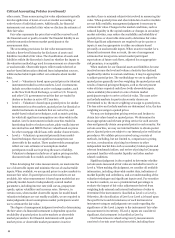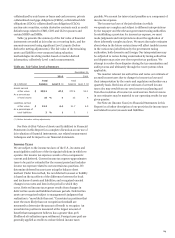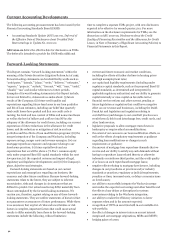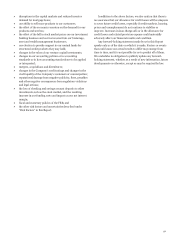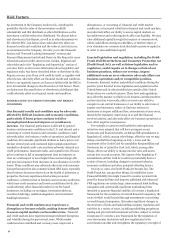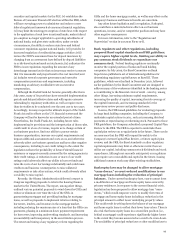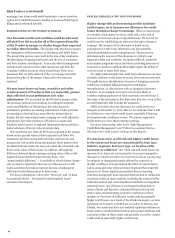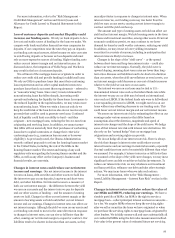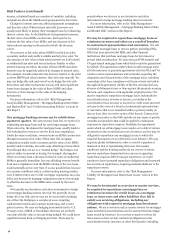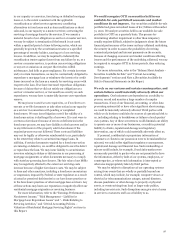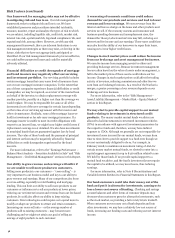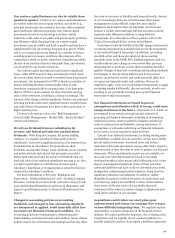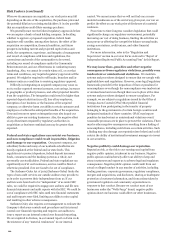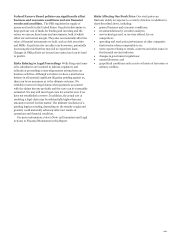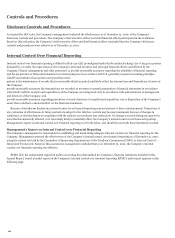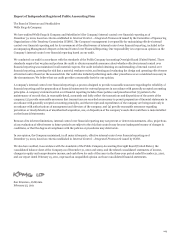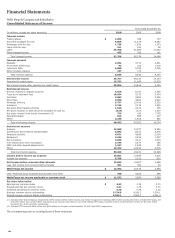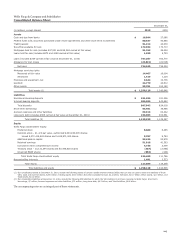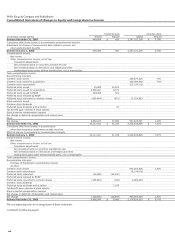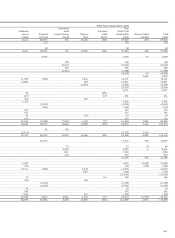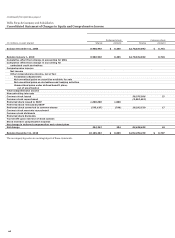Wells Fargo 2010 Annual Report Download - page 100
Download and view the complete annual report
Please find page 100 of the 2010 Wells Fargo annual report below. You can navigate through the pages in the report by either clicking on the pages listed below, or by using the keyword search tool below to find specific information within the annual report.Risk Factors (continued)
Our framework for managing risks may not be effective
in mitigating risk and loss to us. Our risk management
framework seeks to mitigate risk and loss to us. We have
established processes and procedures intended to identify,
measure, monitor, report and analyze the types of risk to which
we are subject, including liquidity risk, credit risk, market risk,
interest rate risk, operational risk, legal and compliance risk, and
reputational risk, among others. However, as with any risk
management framework, there are inherent limitations to our
risk management strategies as there may exist, or develop in the
future, risks that we have not appropriately anticipated or
identified. If our risk management framework proves ineffective,
we could suffer unexpected losses and could be materially
adversely affected.
Financial difficulties or credit downgrades of mortgage
and bond insurers may negatively affect our servicing
and investment portfolios. Our servicing portfolio includes
certain mortgage loans that carry some level of insurance from
one or more mortgage insurance companies. To the extent that
any of these companies experience financial difficulties or credit
downgrades, we may be required, as servicer of the insured loan
on behalf of the investor, to obtain replacement coverage with
another provider, possibly at a higher cost than the coverage we
would replace. We may be responsible for some or all of the
incremental cost of the new coverage for certain loans depending
on the terms of our servicing agreement with the investor and
other circumstances. Similarly, some of the mortgage loans we
hold for investment or for sale carry mortgage insurance. If a
mortgage insurer is unable to meet its credit obligations with
respect to an insured loan, we might incur higher credit losses if
replacement coverage is not obtained. We also have investments
in municipal bonds that are guaranteed against loss by bond
insurers. The value of these bonds and the payment of principal
and interest on them may be negatively affected by financial
difficulties or credit downgrades experienced by the bond
insurers.
For more information, refer to the “Earnings Performance –
Balance Sheet Analysis – Securities Available for Sale” and “Risk
Management – Credit Risk Management” sections in this Report.
Our ability to grow revenue and earnings will suffer if
we are unable to sell more products to customers.
Selling more products to our customers – “cross-selling” – is
very important to our business model and key to our ability to
grow revenue and earnings. Many of our competitors also focus
on cross-selling, especially in retail banking and mortgage
lending. This can limit our ability to sell more products to our
customers or influence us to sell our products at lower prices,
reducing our net interest income and revenue from our fee-based
products. It could also affect our ability to keep existing
customers. New technologies could require us to spend more to
modify or adapt our products to attract and retain customers.
Increasing our cross-sell ratio – or the average number of
products sold to existing customers – may become more
challenging and we might not attain our goal of selling an
average of eight products to each customer.
A worsening of economic conditions could reduce
demand for our products and services and lead to lower
revenue and lower earnings. We earn revenue from the
interest and fees we charge on the loans and other products and
services we sell. If the economy worsens and consumer and
business spending decreases and unemployment rises, the
demand for those products and services may fall, reducing our
interest and fee income and our earnings. These same conditions
may also hurt the ability of our borrowers to repay their loans,
causing us to incur higher credit losses.
Changes in stock market prices could reduce fee income
from our brokerage and asset management businesses.
We earn fee income from managing assets for others and
providing brokerage services. Because investment management
fees are often based on the value of assets under management, a
fall in the market prices of those assets could reduce our fee
income. Changes in stock market prices could affect the trading
activity of investors, reducing commissions and other fees we
earn from our brokerage business. As a result of the Wachovia
merger, a greater percentage of our revenue depends on our
brokerage services business.
For more information, refer to the “Risk Management –
Asset/Liability Management – Market Risk – Equity Markets”
section in this Report.
We may elect to provide capital support to our mutual
funds relating to investments in structured credit
products. The money market mutual funds we advise are
allowed to hold investments in structured investment vehicles
(SIVs) in accordance with approved investment parameters for
the respective funds and, therefore, we may have indirect
exposure to CDOs. Although we generally are not responsible for
investment losses incurred by our mutual funds, we may from
time to time elect to provide support to a fund even though we
are not contractually obligated to do so. For example, in
February 2008, to maintain an investment rating of AAA for
certain money market mutual funds, we elected to enter into a
capital support agreement for up to $130 million related to one
SIV held by those funds. If we provide capital support to a
mutual fund we advise, and the fund’s investment losses require
the capital to be utilized, we may incur losses, thus reducing
earnings.
For more information, refer to Note 8 (Securitizations and
Variable Interest Entities) to Financial Statements in this Report.
Our bank customers could take their money out of the
bank and put it in alternative investments, causing us to
lose a lower cost source of funding. Checking and savings
account balances and other forms of customer deposits may
decrease when customers perceive alternative investments, such
as the stock market, as providing a better risk/return tradeoff.
When customers move money out of bank deposits and into
other investments, we may lose a relatively low cost source of
funds, increasing our funding costs and reducing our net interest
income.
98


